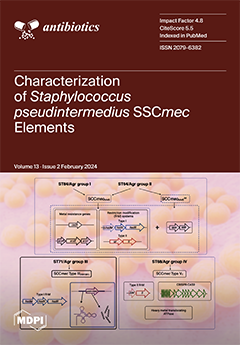Among carbapenem-resistant Enterobacterales (CRE) are diverse mechanisms, including those that are resistant to meropenem but susceptible to ertapenem, adding further complexity to the clinical landscape. This study investigates the emergence of ertapenem-resistant, meropenem-susceptible (ErMs)
Escherichia coli and
Klebsiella pneumoniae CRE across five hospitals in San Antonio, Texas, USA, from 2012 to 2018. The majority of the CRE isolates were non-carbapenemase producers (NCP; 54%; 41/76); 56% of all NCP isolates had an ErMs phenotype. Among ErMs strains,
E. coli comprised the majority (72%). ErMs strains carrying
blaCTX-M had, on average, 9-fold higher copies of
blaCTX-M than CP-ErMs strains as well as approximately 4-fold more copies than
blaCTX-M-positive but ertapenem- and meropenem-susceptible (EsMs) strains (3.7 vs. 0.9,
p < 0.001). Notably, carbapenem hydrolysis was observed to be mediated by strains harboring
blaCTX-M with and without a carbapenemase(s). ErMs also carried more mobile genetic elements, particularly IS
26 composite transposons, than EsMs (37 vs. 0.2,
p < 0.0001). MGE- IS
Vsa5 was uniquely more abundant in ErMs than either EsMs or ErMr strains, with over 30 more average IS
Vsa5 counts than both phenotype groups (
p < 0.0001). Immunoblot analysis demonstrated the absence of OmpC expression in NCP-ErMs
E. coli, with 92% of strains lacking full contig coverage of
ompC. Overall, our findings characterize both collaborative and independent efforts between
blaCTX-M and OmpC in ErMs strains, indicating the need to reappraise the term “non-carbapenemase (NCP)”, particularly for strains highly expressing
blaCTX-M. To improve outcomes for CRE-infected patients, future efforts should focus on mechanisms underlying the emerging ErMs subphenotype of CRE strains to develop technologies for its rapid detection and provide targeted therapeutic strategies.
Full article






